
Implementing a strong brand strategy in a company creates growth on multiple timelines.
Some growth gets realized over the long term. It comes as a result of the big picture clarity and alignment of the team, and embedding the values and culture of your brand into your operations. Over time, these deep shifts allow your brand to reach more and more people and build trust around the unique value your brand provides.
Luckily, while those big picture factors are generating long term growth, there are other areas that provide an immediate ROI.
A strong brand strategy allows you to tell a more emotionally engaging story. It creates a crystal clear image in the minds of your customers on how their lives will improve through your business. It demonstrates how your brand is different so that customers remember you.
These ideas fuel your marketing and communication. They capture the attention of your customers and help convert them more effectively.
This means growth for your business today.
To help highlight these immediate benefits of investing in your brand strategy we can look at a recent case study with one of our clients.
Through the brand strategy and customer research work we did with them, we helped generate significant growth for a key area of their business.
Let’s break down the work we did, the results it generated, and show how you can implement some of the ideas in your own brand.
The Client: Eat This Much – Automated Meal Planning And Nutrition Tracking

Map & Fire has worked with Eat This Much over the last few years to help expand their brand in the health and nutrition space. Their core product is a powerful app that generates automatic meal plans and recipes. It helps people track their food and nutrition and discover new food ideas based on their specific diet preferences.
Since we started working with Eat This Much, we’ve helped with their core brand positioning, messaging, and app onboarding. We’ve also done a few research studies around the needs and pricing sensitivity of their customers.
That first phase of work all centered around selling monthly app subscriptions to their B2C audience segment.
Last year though, we looked at another key growth opportunity for the brand: a B2B segment of trainers and health professionals.
The Eat This Much team had developed a new version of their offering that allowed health professionals to provide meal planning services to all their clients.
For the professionals it was an opportunity to simplify efforts and generate more revenue around this service offering.
After its initial launch, Eat This Much saw some traction with the offering but didn’t feel like it was reaching its full potential.
So, we worked with them to get clear about the positioning for this health professional audience and speak to their needs more effectively.
Step 1: Brand Positioning For Health Professionals
We started off by breaking down the Jobs to Be Done (i.e. what customers seek to accomplish) and Elements of Value (i.e. what customers value in a solution) that we believed were most important for the professional audience segment.
This work built off some of the previous positioning and research we’d done as well as the Eat This Much team’s knowledge in the space.
Some of the Jobs to Be Done we focused in on included:
- Save time on developing client meal plans
- Organize, track, and reuse meal plans
- Get accurate nutrition information on meal plans
- Gain better visibility on what clients are eating
- Make nutrition and diet tracking more interactive and engaging for clients
- Provide easy access to recipes
- Make my services feel more professional and premium
- Provide new services to my clients to expand revenue
These Jobs aligned with some key Elements of Value:
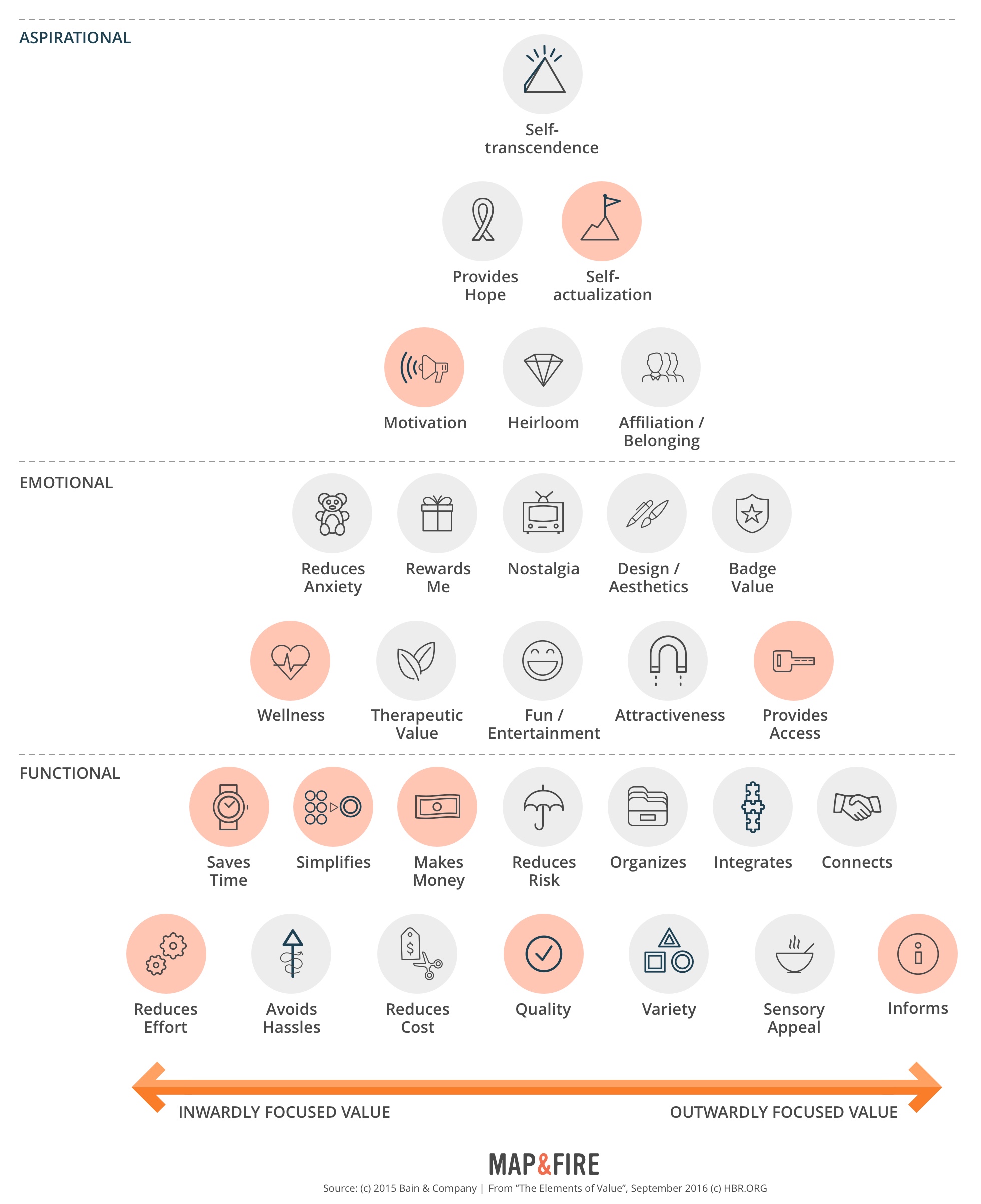
- Saves Time
- Quality
- Simplifies
- Reduces Effort
- Informs
- Makes Money
- Provides Access
- Wellness
- Motivation
- Self-Actualization
Using those frameworks and going through that definition process allowed us to:
- Apply our previous knowledge to inform the direction for this new segment
- Establish a baseline for the positioning and value proposition
- Lay the groundwork to inform our research with these customers
How to use this with your own brand:
The two frameworks we talked about, Jobs to Be Done and the Elements of Value, can be applied to your own brand, too.
Using these helps your team take a step back from your product and services and focus on the needs of your customers. This separation is key in developing a brand that speaks to what your customers want to accomplish in their lives.
With these ideas in place, you’ll gain a better understanding of how your customers think. You’ll also be better equipped to ask them insightful questions through research.
Learn more about our Brand Guidebook process to clarify your brand’s positioning and messaging to that you can connect with a larger audience.
Step 2: Validating Our Ideas With Customer Research

Now that we had established a concept for our positioning with health professionals, we needed to test it out with the people we aimed to reach.
We did this in two ways:
- Customer survey for professionals who actively use the platform and those that don’t
- Customer interviews with professionals who use the platform and those that don’t
Our goal was to learn why current users are happy with the product, and why others may not have tried it yet.
This allowed us to see the positioning from both points of view.
- For those that use it and love it, we could tap into the value that’s most important to them and use that to help convey the story to others.
- For those that don’t use it, we can better understand their pain points and highlight how the app helps address them.
The results of this work were extremely insightful.
From the surveys we picked up several highlights on what was most important for the practices of these professionals.
Of the reasons to engage with Eat This Much, 44% rated “Adding an extra layer of quality and professionalism to my services” as the most important.
We also learned that for the app itself, the two most valuable attributes were “Saves me time” (38%) and “Allows me to offer a service to clients I wouldn’t have otherwise” (25%).
The interviews allowed for an extra layer of qualitative data. We were able to dig into more specifics around the behaviors and emotions of these health professionals when it comes to managing their practices.
We were able to hear stories of how they drown in their DIY spreadsheets creating meal plans by hand. And how that effort keeps trainers from even wanting to offer the service to clients because it’s such a hassle.
It also revealed recurring behaviors for how they use customized templates to craft meal plans for individual clients.
Finally, we learned key information on the rates and typical practice size for trainers, including:
- On average, these trainers charge clients about $35/month for meal planning services
- And the most common practice size (over 50%) was between 11-25 clients
This provided fantastic support for the ROI a trainer could gain from the app and help inform pricing and tier structures for Eat This Much.
And as an added bonus, one of the interview participants was so enthusiastic and thoughtful about her responses that she provided a perfect testimonial for the marketing page.
How to use this with your own brand:
Customer research can sound intimidating and time consuming when you first get started. But the truth is that there are lots of ways to execute research and get those critical results quickly.
It all starts with understanding your customers. You need to know the information you’re seeking and the right type of questions to ask to get it (see the frameworks above to help).
But once you have that, you can start talking to both existing customers as well as people that don’t know your brand. Even five, 30-minute conversations can provide incredible insights on how your customers think.
Surveys are another critical component to capture themes across a larger group. Tools like SurveyMonkey even provide paid audience panels to gather feedback if you don’t have a built-in audience yet or want to get feedback from “cold” customers.
Once you have that information, you can review and extract out the key insights to create more effective communication with your audience.
Learn more about how our customer research services to uncover critical insights about your customers, grow your engagement, and improve conversions.
Step 3: Developing Brand Messaging And Visuals
With our positioning refined and validated and our research data in hand, we were ready to translate these ideas into a new landing page for Eat This Much.
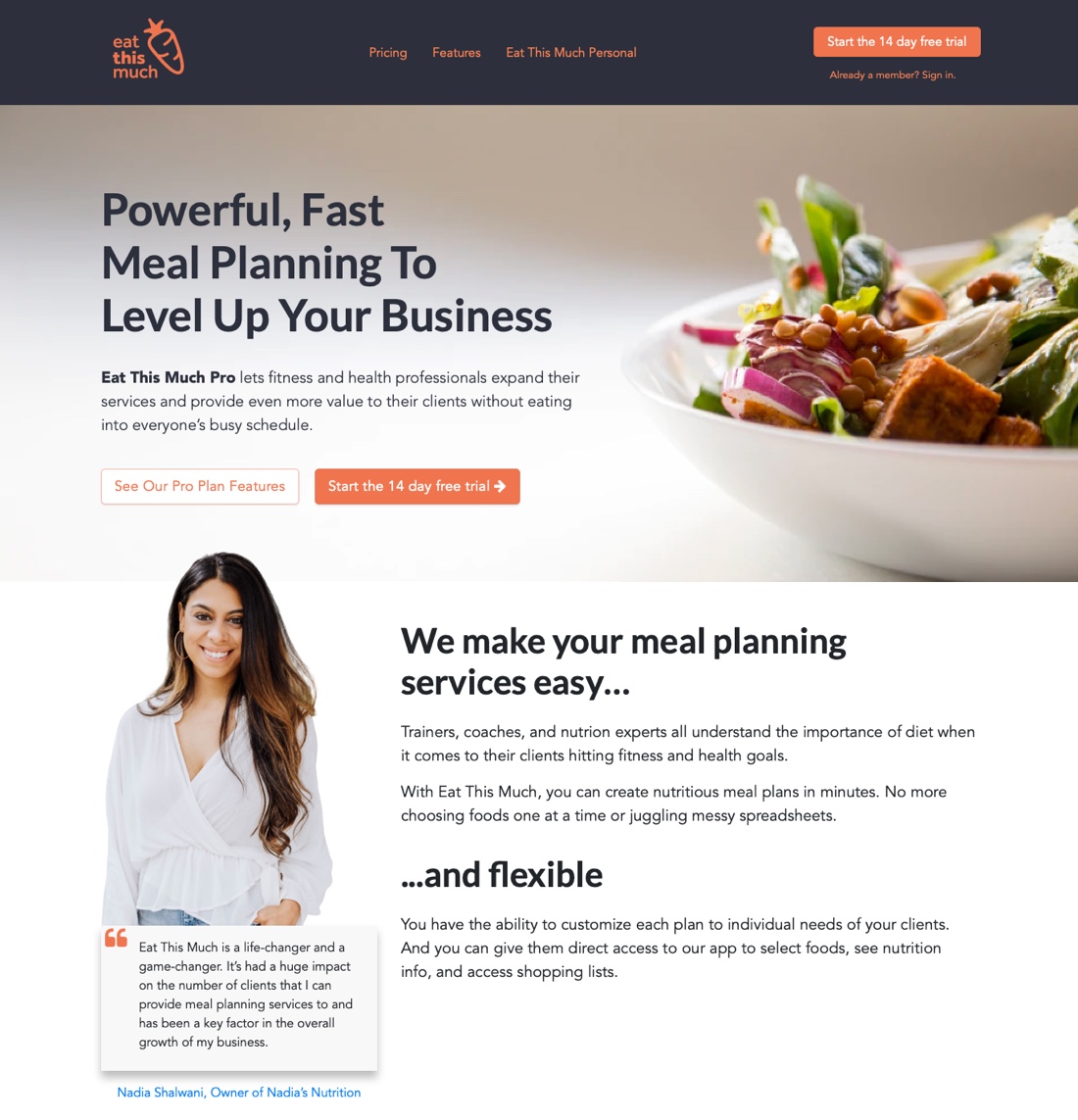
The value proposition that we decided to focus on targeted the desire of health professionals to expand their services and make them feel more premium without a lot of extra work.
Many of these professionals run their own practice or are a part of a small collective. So, this value proposition gets to the heart of what small business owners need and often struggle to achieve on their own.
We also leaned into the benefits of speed and simplicity to reinforce that this tool would make their lives easier and keep them from the DIY stress of “juggling messy spreadsheets”.
And as mentioned above, one of the interview participants who was getting a lot of value from the app served as the perfect social proof voice on the page.
In the next section of the page, we highlighted and prioritized the features based on what we heard was most important and top of mind for the audience.
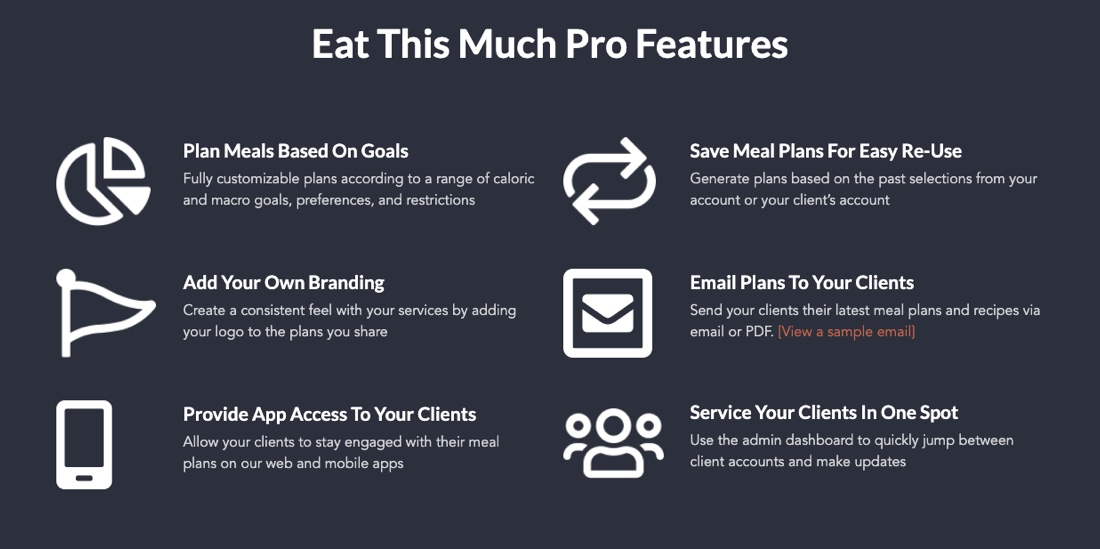
Again this section highlights how easily the product integrates into their practice and emphasizes the control that professionals maintain with using the app.
By listening to these potential customers it made it easy to focus on the most impactful areas of value.
How to use this with your own brand:
Once you’ve developed clear positioning and gathered data through research, executing marketing creative becomes so much easier.
By using your positioning and customer data you can focus your creative resources on the ideas that are most impactful for your audience.
Customer research also helps in prioritizing points of value. Your customers can’t absorb every bit of value you provide at once. It’s critical to know which aspects will create that initial emotional trigger and which can serve as key functional support.
The Results: Increased Attention And Conversions
All the effort we put in produced solid end results.
Looking at the 3-month period before and after launch, visitors increased their time on the new landing page by 21%. The increase meant they now spent almost 2 minutes per visit.
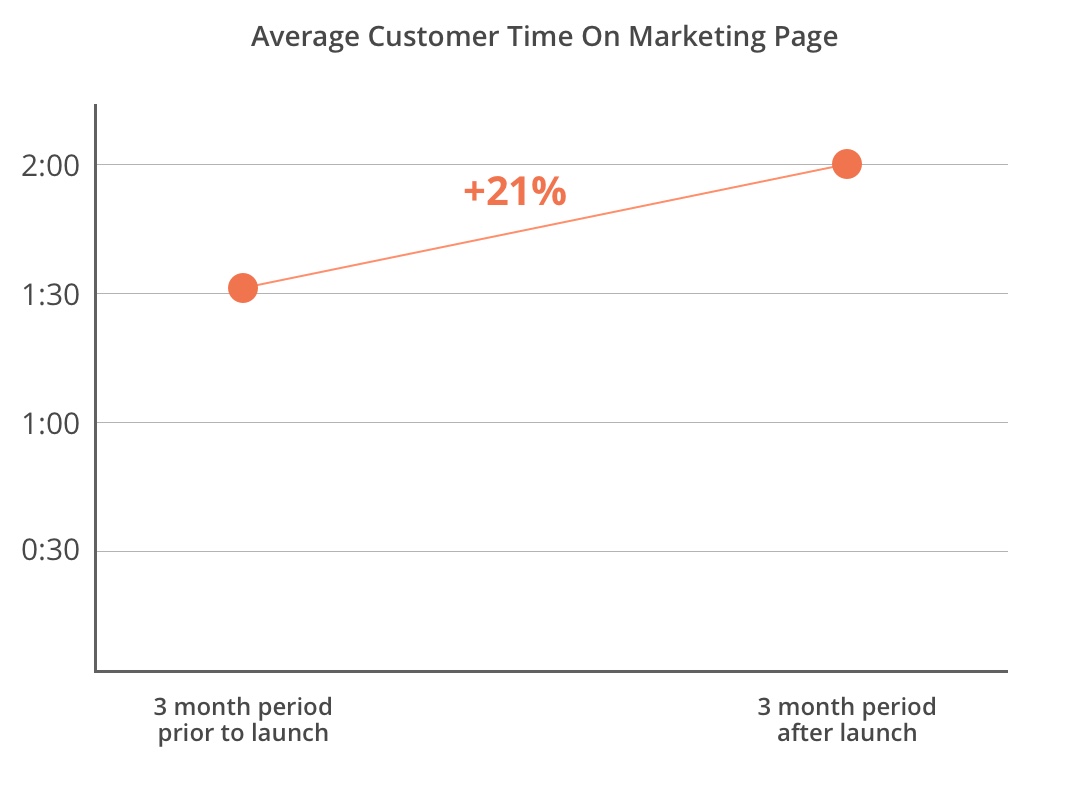
This is a great signal that the messaging piqued interest and kept customers reading to see how the app might fit with their needs.
And more importantly, paid conversions for the trainer app increased by 59% compared to the previous quarter.
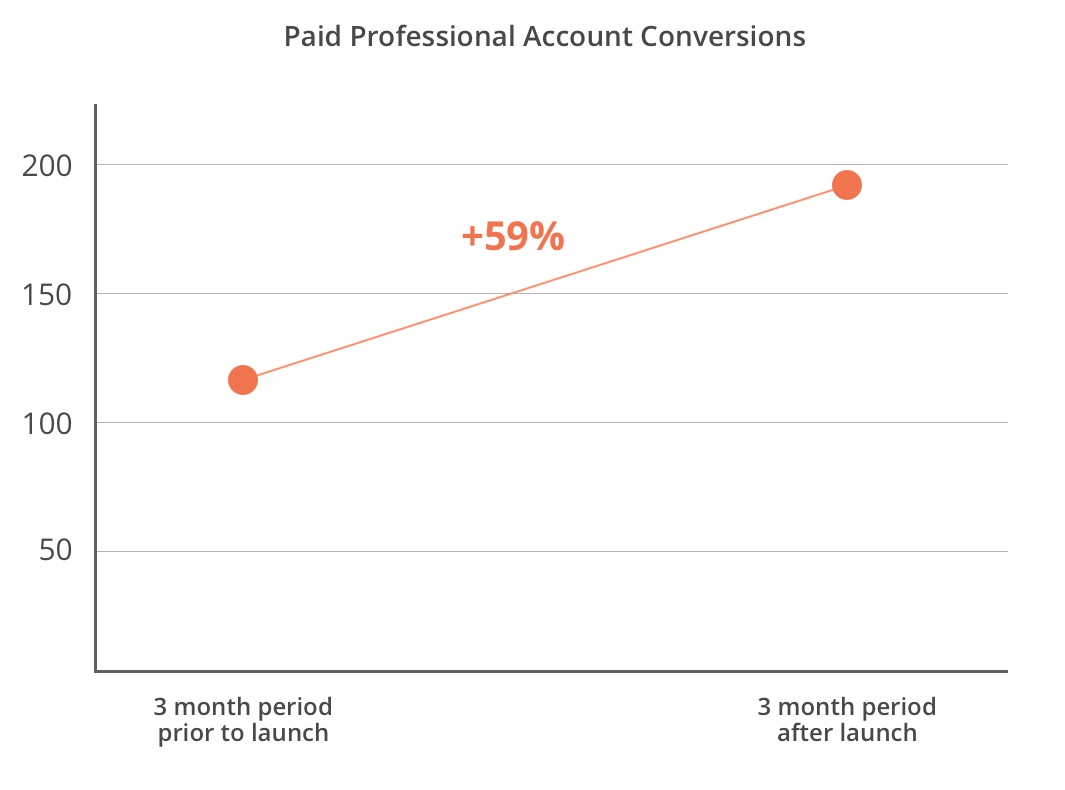
This increase sparked the team to invest even more resources in the app. They’ve since begun testing new ad campaigns featuring video testimonials to further boost conversions.
In the end, the work we put into their positioning, research and messaging helped elevate this audience segment from a potential growth area into a significant revenue expansion point for the business.
Final Thoughts
Developing a strong brand and marketing strategy based on customer research is an investment. It takes time and energy and requires a structured approach to get the most out of the work.
But the return on that investment can be significant. Not just with your bottom line, but also with the clarity and confidence you gain around the direction of your brand.
The insights you gain can be applied in lots of ways beyond your website. Once you’re clear about your positioning and messaging, that same work can (and should!) inform all of your brand’s communication from social, to SEO content, to newsletters, and digital ads.
Making process and research-driven decisions takes some work but it gets easier and easier the more you invest in them. And with your brand strategy, research, and marketing all working together, you’ll be able to tap into both long term and immediate growth.

Get Help Growing Your Brand
If you’re ready to build stronger connections with your customers, reach out for a free consultation. We’ll help you transform your best business thinking into an actionable, shareable, growth-oriented guide. Click below to learn more about the Brand Guidebook process.

